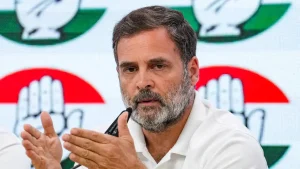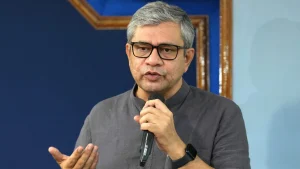New Delhi – In a significant policy reversal, the Modi government announced Wednesday its decision to include caste census in the upcoming national population count, reviving a controversial issue that has seen political twists and turns for over a decade. This surprise move effectively brings full circle India’s journey with caste census that began during the UPA government’s tenure in 2010-11 but remained unimplemented due to various cited complications.
Modi Government’s Unexpected Announcement

The announcement to conduct a caste based census alongside the regular decennial population enumeration takes away a major talking point from the opposition Congress party. The caste based census issue has been particularly championed by Rahul Gandhi, who repeatedly questioned why the BJP government was reluctant to release findings from the previous Socio Economic and Caste Census (SECC) conducted during the UPA-2 administration.
Political analysts view this sudden embrace of caste census as potentially strategic timing ahead of crucial elections, positioning the BJP to counter opposition narratives around caste representation. The caste based census announcement comes amid growing demands from various political parties representing Other Backward Classes (OBCs) who have long argued that accurate data is essential for proper welfare scheme implementation.
Also Read: PM Modi Gives Free Hand to the Indian Army for Decisive Pahalgam Attack Response
The UPA’s Original Caste Census Attempt
The origins of India’s modern caste census debate can be traced back to 2010, when the UPA-2 government faced unexpected pressure from its allies. The RJD and Samajwadi Party, along with JD(U), strongly advocated for a caste census to be conducted alongside the 2011 general population count.


Initially, both major national parties – Congress and BJP – maintained ambiguous positions on the caste based census, though OBC leaders within both organizations supported the idea. The Home Ministry under P. Chidambaram expressed concerns that including caste questions during the normal Census operation could compromise data accuracy.
“Population Census is not the ideal instrument for collection of details on caste,” the Home Ministry had cautioned the Cabinet, emphasizing “operational difficulties” that might distort fundamental population figures during a caste census.
Political Pressure Forces Policy Shift
Despite official reservations about conducting a comprehensive caste census, socialist parties from the Hindi heartland—whose primary voter base comprised OBCs—persisted with their demand. Their push for a caste based census also connected with their opposition to the women’s reservation bill without quota provisions for OBC communities.
The mounting political pressure led to parliamentary debates on May 6-7, 2010, where most participating leaders, including those from BJP, expressed support for a caste based census. This prompted the UPA government to reconsider its position on the caste census question.


By May 27, the government had formed a Group of Ministers (GoM) headed by then Finance Minister Pranab Mukherjee to evaluate the caste based census proposal. After consulting all political parties and finding broad support, the decision to undertake a caste census was finalized in September 2010.
SECC Implementation Challenges
In June 2011, the Ministry of Rural Development began the Socio Economic and Caste Census (SECC), a massive undertaking to study approximately 25 crore households across India. The caste based census component involved three separate ministries working in coordination:
- Rural Development Ministry handled rural enumeration
- Ministry of Housing and Urban Poverty Alleviation managed urban areas
- Ministry of Home Affairs provided overall administrative control through the Registrar General of India
The caste census process faced multiple delays and missed deadlines. Though household enumeration concluded by late 2012, data tabulation continued through 2013. By September-October 2013, only provisional data was available, but with general elections approaching, the UPA government reportedly decided to let the next administration handle the caste census results release.
The Modi Government’s Handling of SECC Data
After assuming power in May 2014, the Modi government initially indicated that the caste census data required additional processing time. In July 2015, it released provisional SECC data for rural India but withheld the caste component, stating it wasn’t finalized.
The government’s position on the caste based census data became increasingly complex over subsequent years:
- July 2016: Parliament was informed that the Office of the Registrar General would process the caste census data before transferring it to an Expert Group to be formed by the Social Justice and Tribal Affairs ministries
- March 2018: The government acknowledged “certain errors” in the caste census data processing
- August 2018: Officials cited “design issues at the data collection stage” for caste census processing delays, also revealing the Expert Group had not been constituted
- Early 2021: The Home Ministry stated there was “no proposal to release the caste data at this stage”
Government’s Affidavit Against Caste Census
The most detailed explanation for withholding the caste census data came in September 2021, when the government filed an affidavit in the Supreme Court effectively rejecting demands for a new caste census. The document described “exclusion of information regarding any other caste” apart from Scheduled Castes and Tribes as “a conscious policy decision.”
Regarding the 2011 SECC, the affidavit cited “technical flaws” that rendered the caste census data unreliable. Most strikingly, the government claimed the exercise had produced an implausible figure of “46 lakh different castes” nationwide, demonstrating that the caste census was “fraught with mistakes and inaccuracies.”
Current Policy Reversal and Political Implications
The Modi government’s April 2025 announcement to conduct a caste census represents a dramatic shift from its previous stance. This decision comes after years of political pressure from opposition parties, particularly Congress, which had been highlighting the government’s reluctance to release the SECC caste based census data.
Political observers note that this caste based census policy reversal may be aimed at neutralizing opposition criticism ahead of upcoming elections. By embracing the caste census, the BJP potentially addresses concerns from its own OBC leaders while potentially disrupting opposition unity on this particular issue.
Path Forward and Challenges
As preparations begin for implementing this new caste based census, several questions remain about methodology and execution. Given the complexities cited in the 2021 affidavit regarding the previous caste based census attempt, the government will need to address multiple logistical and technical challenges.
Key issues include standardizing caste classifications across regions, ensuring accurate self-reporting, and developing robust data validation processes to avoid the reported problems that plagued the 2011 caste census effort.
The announcement also raises expectations among various social groups regarding potential policy implications that might follow the caste based census results, including reservation adjustments and targeted welfare schemes based on updated demographic information.

